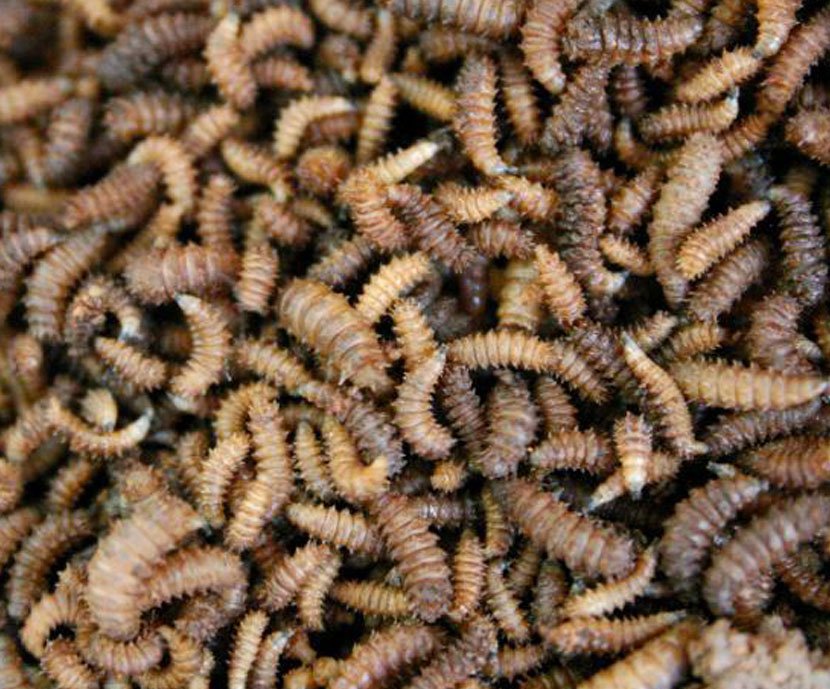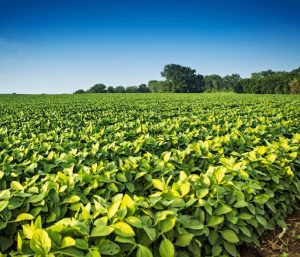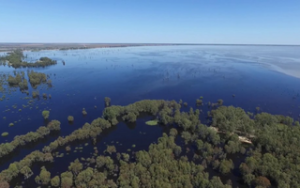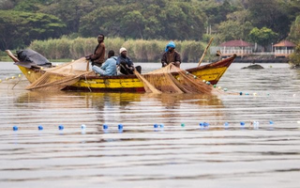 19 Jan 2023
19 Jan 2023
Waste streams and insects. Finding alternatives to replace soy in animal feed and other foods.
Soybeans represent one of the main protein sources primarily used for animal diets globally. However, an increased demand on this feedstuff and its subsequent large scale cultivation, is heavily linked to deleterious environmental impacts including deforestation and biodiversity loss. Considering that significant percentage of the world’s soy is produced in Brazil, Argentina, and the USA, this implies that trade flows exacerbate global nitrogen imbalances even further. As well as increasing transportation costs, and pollution associated with it.

As a result there are rising demands regarding the need to find alternative protein source that can supplant soybeans, or at least relieve its negative environmental impacts to some extent by reducing the levels in which it is used. Under this scope, a considerable amount of alternatives appear to be viable options at least from a theoretical and technical standpoint. However, putting this into practice, still requires additional actions, amongst which regulatory decisions and prompt approvals represent a significant factor.

Researchers from Wageningen University discussed sustainable and affordable alternative ingredients for animal feed in an online session held for policymakers on January 24. Focusing on how these alternatives could be introduced with the support of policymaking.
Protein source alternatives must fit within a complex puzzle that must be considered before taking any decision. As compound feed manufacturers determine the optimal composition of their products on a daily basis. Reviewing and considering each individual ingredient with its nutritional value. Factors such as: costs, availability and nutritional value and pricing are determinant.
Ultimately, the compound feed industry aims to deliver a high-quality product
‘Important constraints are used in the formulation process. The feed must deliver the necessary energy and nutrients and match the animals’ nutritional requirements. At the same time, minimum and maximum constraints are sometimes set for the inclusion of particular raw materials.’ Thus, rapeseed and sunflower seed meals (by-products of oil extraction) are both an alternative to soybean meal. Rapeseed meal, however, contain substances with a divergent taste, which may negatively influence feed intake. Jansman: ‘Ultimately, the compound feed industry aims to deliver a high-quality product that contains all the required nutrients, is easily ingested and supports adequate animal performance.’
Alfons Jansman, a senior researcher at Wageningen Livestock Research
Although there already are various alternative protein sources, such as grains, legumes and residue streams, these are still found in insufficient quantities.
Insects and algae are new protein alternatives which have drawn great interest in the last few years. With a special focus on black soldier fly larvae as a promising protein source. The larvae thrive in residue streams such as manure and waste from catering businesses as well as other enterprises. The latter represents a breakthrough in terms of being able to recycle the material found in these waste streams, which up until now has no other potential use.
Aiming to gather more information on the potentiality of BSF larvae use, Adriaan Vernooij a researcher and project manager at Wageningen Livestock Research, is studying these insects around Lake Victoria in Africa next to his team. WHere the first step within their research has been mapping the availability of local residue streams.

The team has been studying the possibilities for the fish industry to using locally available residue streams to produce fish feed. Considering the fact that as the industry expands, its demand for protein sources also increases.

‘We collaborate with BSF producers in Kampala and Kisumu.’ Both enterprises already use the black soldier fly. ‘We used their larvae to manufacture fish feed, which we then test to determine whether insects are a viable alternative for conventional ingredients such as soy and fishmeal.’ Initial results are positive. The fish show average or above-average growth, and, more importantly, this alternative ingredient can be sourced locally. This reduces the need to import ingredients from Kenia, Zambia or even Europe. Says Vernooij.
Despite the fact that this study is being carried out in Africa,its approach can be applied globally. However, in order for this to occur regulations regarding the use of residue streams, must be modified and made more flexible. This is especially true for the EU.
Under this context, Elise Hoek, a Wageningen Food Safety Research researcher, studies the potential risks associated with the use of residue streams for insect feeding and breeding. Considering for example that heavy metals may be present in soil as well as other potential contaminants that can be health hazards.For such reasons current legislation establishes safety levels regarding the presence of harmful substances in animal feed as well as food for human consumption.
Elise Hoek researcher Wageningen Food Safety Research states that:
BSF larvae are capable of neutralising toxins produced by mould
Hoek measures how much of these substances are absorbed by insects bred on residue streams and under what circumstances. ‘A dangerous substance such as cadmium may accumulate in a particular insect.’ However, it is also possible for the opposite to occur.
‘In Africa, we used mouldy corn to breed black soldier fly larvae. The larvae are capable of neutralising the toxins produced by mould, the so-called mycotoxins.’ Thus, food that is no longer fit for consumption can be transformed into valuable proteins, bringing us one step closer to a circular food chain. Hoek: ‘we hope to substantiate future easing of legislation through our safety research.’
Additional research may also answer the question of how growing alternatives can be made profitable for farmers. Jansman: ‘one hectare of wheat currently yields a higher profit than a hectare of leguminous plants, in part due to the fact that the latter is a riskier crop. Therefore, research on how to mitigate these risks remains relevant.’
Moreover, subsidies may be deployed to improve the production process. Vernooij: ‘It is technically possible to breed insects on residue streams. More research is needed to determine on what scale this is viable.’ Jansman adds: ‘Subsidies also serve to bring new concepts to the market.’ Organic products provide an excellent example. A percentage of the public is willing to pay more if a product meets specific criteria. ‘Rather than merely considering how animals are kept, you may also consider the origin of feed and resources.’
Trying to consider all of the aforementioned factors, finding alternative protein sources and exploiting waste streams represents a significant step regarding sustainability. Nonetheless, in order for such a breakthrough to take place, policymakers must rise up to the occasion.
‘The environmental benefits are huge, but we must also be wary of possible risks.’ Vernooij says.
Source: Read orginial article in the following link: https://www.wur.nl/en/research-results/research-institutes/livestock-research/show-wlr/the-role-of-waste-streams-and-insects-in-the-search-for-an-alternative-to-soy.htm
Subscribe now to the technical magazine of animal nutrition
AUTHORS

Nutritional Interventions to Improve Fertility in Male Broiler Breeders
Edgar O. Oviedo Rondón
The Use of Organic Acids in Poultry: A Natural Path to Health and Productivity
M. Naeem
Synergistic Benefits of Prebiotics and Probiotics in Poultry, Swine, and Cattle
Gustavo Adolfo Quintana-Ospina
Hybrid Rye Potential in Laying Hen Feed Rations
Gwendolyn Jones
A day in the life of phosphorus in pigs: Part I
Rafael Duran Giménez-Rico
Use of enzymes in diets for ruminants
Braulio de la Calle Campos
Minerals and Hoof Health in the Pregnant Sow
Juan Gabriel Espino
Impact of Oxidized Fats on Swine Reproduction and Offspring
Maria Alejandra Perez Alvarado